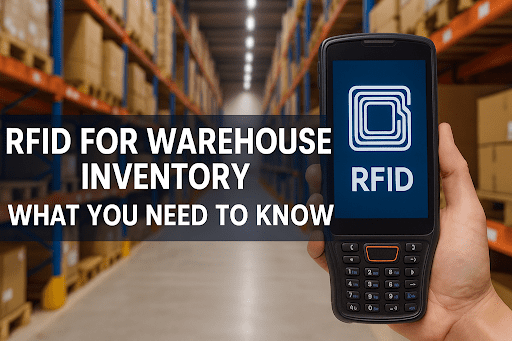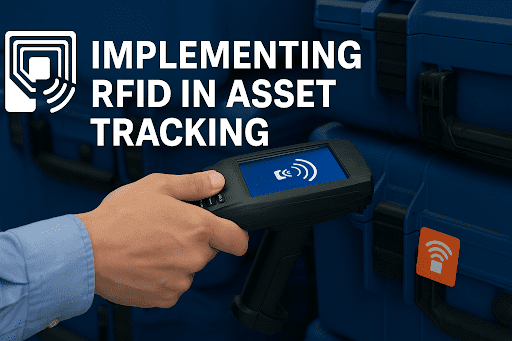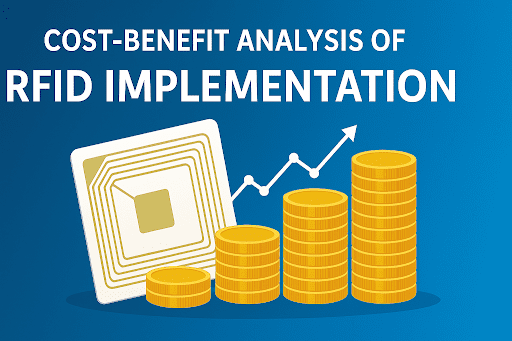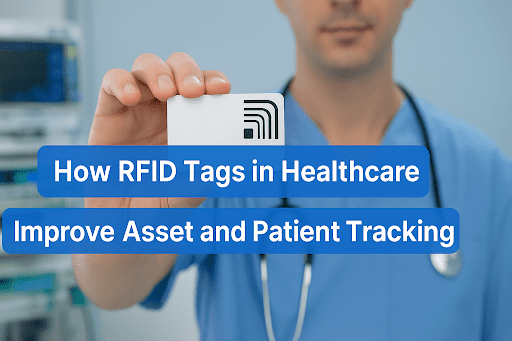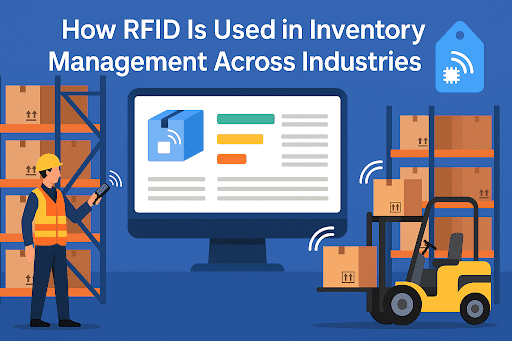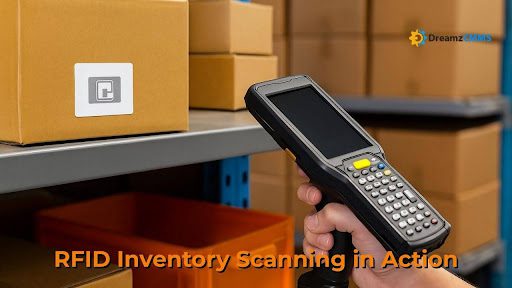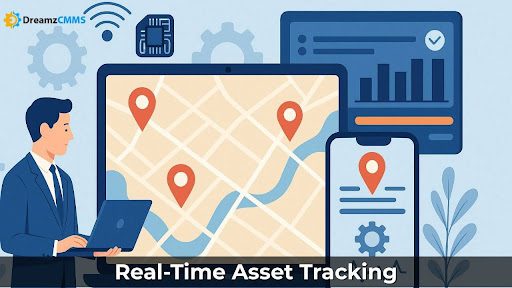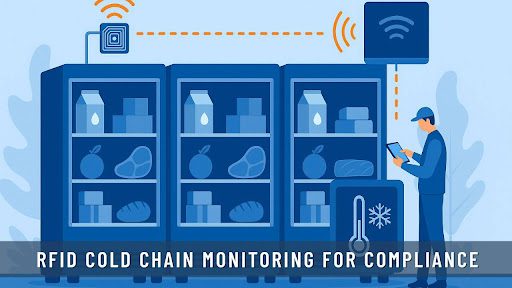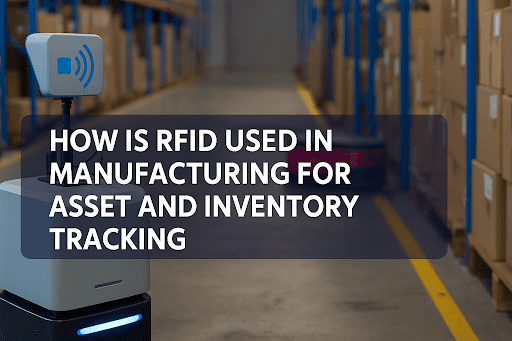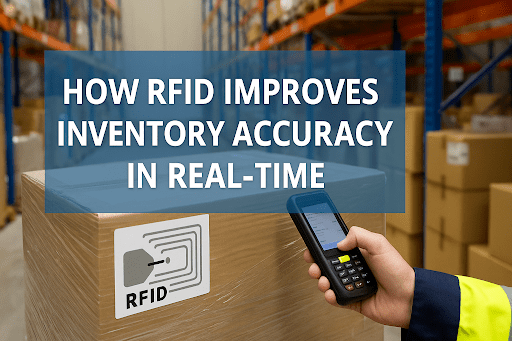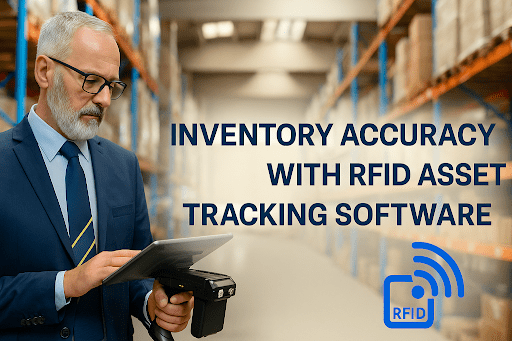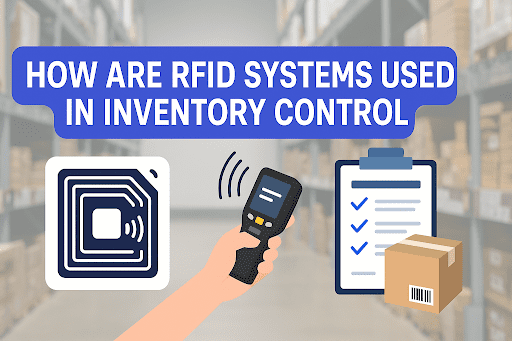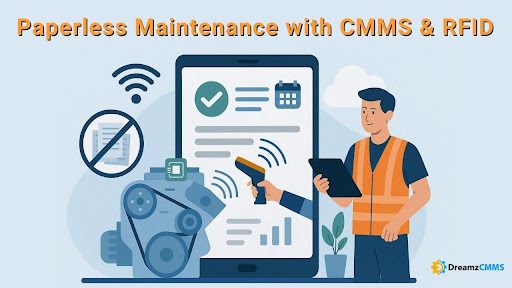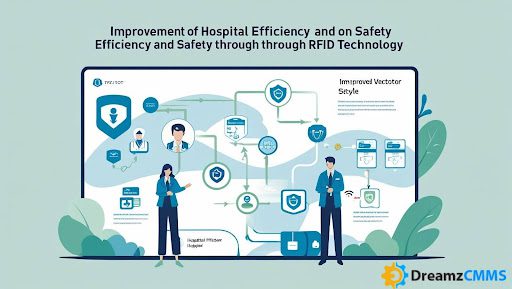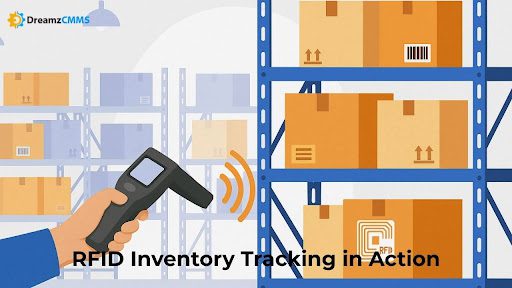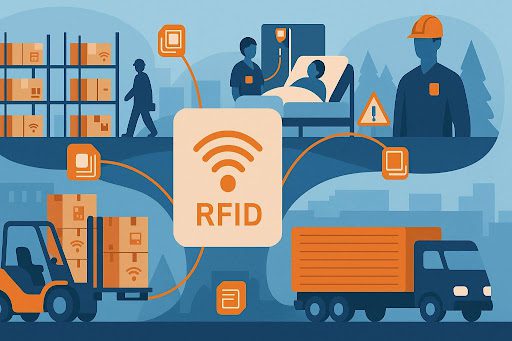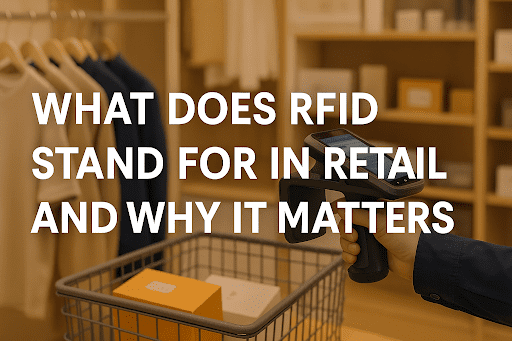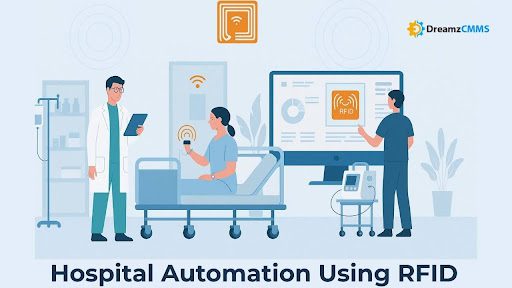 BACK TO Blog
BACK TO Blog
Asset Rental Management
RFID Asset Tracking
Adopting Radio Frequency Identification (RFID) technology has revolutionized asset tracking operations throughout healthcare facilities and logistics networks as well as manufacturing plants and retail centers. RFID provides real-time tracking alongside automated systems to minimize manual work while enabling better asset location capabilities. The central role RFID plays in asset management
- May 23, 2025
- DreamzCMMS Team
- 10 minutes read
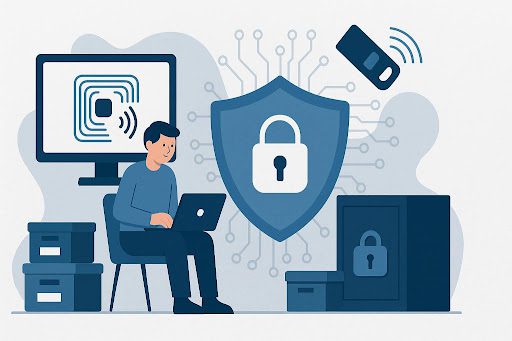
- May 23, 2025
- DreamzCMMS Team
- 10 minutes read
Adopting Radio Frequency Identification (RFID) technology has revolutionized asset tracking operations throughout healthcare facilities and logistics networks as well as manufacturing plants and retail centers. RFID provides real-time tracking alongside automated systems to minimize manual work while enabling better asset location capabilities. The central role RFID plays in asset management operations makes data security in RFID systems a pressing matter of concern. As part of contemporary asset management strategies, RFID technology delivers real-time tracking together with predictive maintenance and operational efficiency through secure data collection.
This article discusses the security risks associated with RFID and data breach prevention methods and authentication strategies for RFID devices and encryption systems, and access controls to achieve secure asset management. Using RFID Asset Tracking Software to integrate your infrastructure enables unified monitoring capabilities and improved security measures for better usage tracking.
Understanding RFID in Asset Management
RFID (Radio Frequency Identification) represents a wireless technology which identifies assets through electromagnetic signals for tracking purposes. It includes:
- RFID Tags (active/passive)
- RFID Readers
- Middleware and Data Management Systems
The RFID system operates through tags being tagged while readers detect the information transmitted by these tags. The processed information moves to CMMS or ERP platforms where it becomes visible and reportable. The unsecured data exchange creates various vulnerabilities in RFID systems.
Looking to enhance your asset visibility and secure every point of failure?
Leverage the power of RFID-enabled Asset Maintenance Management Software to monitor, track, and protect critical assets in real time. From encryption to intelligent scheduling, DreamzCMMS offers a centralized platform for secure and efficient operations.
Get started today and transform your approach to asset security.
Why Data Security in RFID Systems Is Crucial
An RFID system enables wireless data transmission which creates entry points for interceptors to gain unauthorized access and perform manipulation. Weak access control in RFID systems can lead to:
- Equipment theft or asset loss
- The entry of false data occurs through duplicated tags.
- Facility access remains unauthorized.
- System downtime occurs when systems become compromised.
- Privacy breaches together with compliance violation incidents.
The expanding usage of RFID requires businesses to implement robust RFID data breach prevention techniques for protecting sensitive information. RFID security stands as an essential risk management strategies because it defends organizations against major operational and cyber threats and compliance issues that result from insecure protocols.
Common RFID Security Risks
The primary threats that endanger data security in RFID systems include:
1. Eavesdropping
RFID signals remain accessible to hackers unless encryption protects them thus making RFID tag encryption a necessity.
2. Cloning and Spoofing
Theft of assets or unauthorized facility entry occurs through fake tags which duplicate original tags. Security authentication mechanisms need to be implemented in RFID devices to prevent this issue.
3. Denial of Service (DoS)
Attackers can flood RFID readers with signals which causes operational disruptions leading to data gaps.
4. Man-in-the-Middle Attacks
Theft actors intercept data transmission between tags and readers to modify the exchanged information thus altering asset records.
5. Physical Tampering
RFID tags remain vulnerable to physical harm and replacement actions which degrade their data quality.
The identification and mitigation of these RFID system vulnerabilities protects both assets and their ongoing operations.
Strategies for Securing RFID Data
A comprehensive security framework which combines multiple layers protects RFID system data while protecting operational processes.
1. RFID Tag Encryption
The implementation of AES (Advanced Encryption Standard) encryption makes RFID tag data inaccessible to unauthorized readers. RFID tags protected through strong encryption methods become resistant to both eavesdropping and cloning attempts.
2. Authentication in RFID Devices
Before starting data exchange the system should enforce mutual authentication to verify both tag and reader authenticity. The system blocks unauthorized devices from accessing data.
- Challenge-response mechanisms
- Digital signatures
- Public Key Infrastructure (PKI)
3. Access Control in RFID Systems
The RFID system should have role-based access controls which enforce different functions on system operations according to user roles. Protect the physical locations of RFID readers and all access points to backend information.
- Multi-factor authentication (MFA)
- User logs and audit trails
- Segmented network access
4. RFID Encryption Techniques
RFID communication should use encryption for the whole path starting from tags to readers and then to backend servers. Use secure APIs and encrypted middleware.
5. Real-Time Monitoring and Anomaly Detection
Security software with alert systems must be used by teams to receive notifications about anomalies as well as unauthorized access attempts.
6. Firmware & Patch Updates
The RFID readers together with their backend systems require scheduled updates for fixing known system vulnerabilities.
7. RFID Data Breach Prevention Policies
Include guidelines for:
- Password rotation and device lockdown
- Secure installation and maintenance of RFID systems
- Data retention and disposal practices
8. Security Testing and Audits
Security audits combined with penetration testing help organizations detect vulnerabilities that exist within their RFID infrastructure.
RFID Privacy Concerns and Regulatory Compliance
RFID privacy issues involve both unauthorized monitoring of people and unauthorized tracking of personal information as well as theft and fraud problems.
- GDPR (General Data Protection Regulation)
- HIPAA (Health Insurance Portability and Accountability Act)
- ISO/IEC 27001 for information security
- Industry-specific safety and privacy protocols
Failure to meet these standards results in lawsuits and fines along with damage to corporate reputation. The implementation of RFID data breach prevention policies with data encryption maintains operational security together with regulatory readiness.
Use Cases Where RFID Data Security Is Critical
1. Healthcare
RFID tracks medications, patient records, and medical equipment. The security of RFID data at this facility poses dangerous threats to patients' health and violates HIPAA standards.
2. Manufacturing
RFID technology enables organizations to track their inventory and tools with precision. Attackers who use device spoofing methods could alter production data.
3. Logistics and Supply Chain
RFID streamlines asset movement and tracking. The compromise of systems leads to inventory destruction and incorrect distribution of items.
4. Retail
Stock management and anti-theft systems in retailers utilize RFID technology. RFID privacy concerns exist when customers use RFID tags for purchases.
5. Defense and Aerospace
Sensitive defense assets use RFID. High-level encryption together with proper RFID system access controls are mandatory.
For facilities relying on RFID for security, maintenance, and asset tracking, pairing RFID with a dedicated Facility Management Software platform ensures seamless oversight and real-time control.
Implementing a Secure RFID Framework
Step 1: Assess Your RFID System Vulnerabilities
Start with a comprehensive security audit. Evaluate:
- Physical security of tags and readers
- Wireless signal encryption
- Network configuration
For a deeper dive into deployment considerations, check out our guide on implementing RFID in asset tracking, which covers infrastructure, cost, and practical use cases.
Step 1: Assess Your RFID System Vulnerabilities
Start with a comprehensive security audit. Evaluate:
- Physical security of tags and readers
- Wireless signal encryption
- Network configuration
For a deeper dive into deployment considerations, check out our guide on implementing RFID in asset tracking, which covers infrastructure, cost, and practical use cases.
Step 2: Choose Secure RFID Technology
Select RFID hardware and software that support:
- Built-in RFID tag encryption
- Remote deactivation of compromised tags
- Support for compliance regulations
Step 3: Integrate with CMMS for Central Control
A secure CMMS enables teams to track asset movements and monitor user access and data logs. Integration enables automated alerts as well as simple RFID cybersecurity policy deployment.
Learn how CMMS enhances security: DreamzCMMS - Asset Maintenance Management Software
Step 4: Educate and Train Teams
Teach employees to:
- Spot tampered tags
- Understand data protection policies
- Properly install and manage RFID equipment
Step 5: Enable RFID Data Breach Prevention Features
Every connection point should be protected through firewalls and intrusion detection systems (IDS). The system should track access logs and define user roles and continuously monitor system operations.
The Future of RFID Data Security
Future technological advancements will transform the way RFID systems protect their data.
- Blockchain for RFID
Immutable ledgers to track tag transactions securely - AI-Driven Threat Detection
Machine learning to detect unusual access patterns - Biometric-Based RFID Access
Biometric authentication uses fingerprint or retina scan data in combination with RFID systems. - Quantum-Resistant Encryption
Future-proofing encryption against quantum computing attacks
Real-World Examples of RFID Data Breaches and Lessons Learned
Example 1: Retail Store Chain RFID Breach
The U.S.-based retail chain suffered an RFID data breach through unauthorized interception of non-encrypted RFID signals between inventory tags and readers. The breach exposed sensitive SKU information as well as stock numbers together with pricing details.
Lesson: RFID data transmissions should always be encrypted and tag storage should contain only minimal non-sensitive information unless proper encryption is used.
Example 2: Healthcare RFID Privacy Violation
A hospital that used RFID tags on patient wristbands failed to protect data transmissions which resulted in both unauthorized patient tracking and exposure of personal health information.
Lesson: RFID privacy risks can be minimized through the use of dynamic IDs that change often and the storage of only essential non-sensitive data.
Example 3: Logistics Spoofing Attack
A supply chain logistics provider encountered a spoofing attack when counterfeit tags replicated original tags to enable the theft of valuable shipments.
Lesson:The implementation of authentication protocols through cryptographic signatures together with reader-tag handshake protocols becomes necessary.
The Role of Artificial Intelligence in RFID Cybersecurity
Artificial Intelligence serves as an essential tool to enhance RFID cybersecurity operations. Here’s how:
- Behavioral Pattern Analysis: Behavioral Pattern Analysis: AI systems monitor tag-reader interactions through time-pattern analysis to detect both anomalies and unauthorized access attempts.
- Predictive Maintenance: The implementation of AI enables predictive maintenance by tracking RFID infrastructure health including signal strength degradation and outdated firmware which helps reduce system vulnerabilities from neglect.
- Automated Response: AI-powered systems use automated responses to disable compromised readers while simultaneously alerting security personnel about detected suspicious activities.
Real-time decision capabilities of AI systems when integrated into RFID systems provide substantial improvement for RFID data breach prevention.
Building an RFID Incident Response Plan
Despite best efforts, breaches may still occur. A well-developed RFID Incident Response Plan (IRP) enables swift identification of incidents and their subsequent containment and restoration.
Key Components of an RFID IRP:
- Detection & Notification Protocols: Detection systems need to have instant notification protocols that identify abnormal activities to alert IT and security teams immediately.
- Isolation Procedures: The isolation procedures demand immediate disabling or quarantining of compromised tags and readers.
- Forensics & Root Cause Analysis: Determine how the breach occurred—was it a cloned tag, a rogue reader, or an insider threat?
- Data Recovery: Restore the integrity of affected data from secure backups.
- Post-Incident Review: Conduct a security audit and update policies based on new vulnerabilities discovered.
By planning for the worst-case scenario, you reduce operational downtime and demonstrate proactive governance.
Enhancing Employee Awareness for RFID Security
RFID system vulnerabilities frequently arise because of human mistakes made by personnel. Organizations need to dedicate funds for regular training programs for their:
- Asset managers and maintenance staff
- IT administrators and cybersecurity teams
- Warehouse or production line workers handling RFID-tagged items
Training should cover:
- How to detect cloned or tampered tags
- RFID device handling best practices
- What to do in case of suspected data breach
A workforce trained in security procedures functions as the primary defense mechanism against RFID data threats.
Final Thoughts
The protection of RFID system data constitutes a mandatory requirement rather than an optional feature. Organizations using RFID in their modern asset management practices must deploy multiple security measures starting from device authentication to RFID encryption techniques for minimizing threats while meeting regulatory standards.
Your organization will achieve maximum RFID benefits through secure and safe operations when you implement measures for RFID system defense and privacy protection and regulatory compliance.
Ready to take control of your asset tracking and security infrastructure?Discover how DreamzCMMS empowers businesses to implement secure, scalable, and intelligent RFID asset management solutions. Visit DreamzCMMS to explore our full suite of enterprise maintenance and facility management tools. Want to see it in action?Book a Free Demo today and experience the future of RFID-powered asset protection. |
Ready for More?
Talk to one of our CMMS experts and see how DreamzCMMS can simplify your maintenance operations.
Book a free consultation